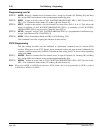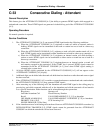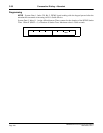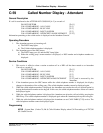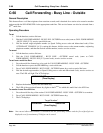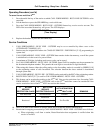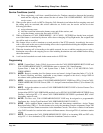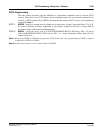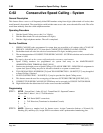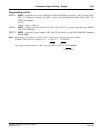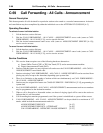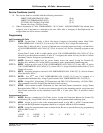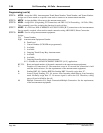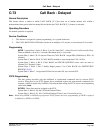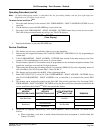
NEAX2400 IPX Feature Programming Manual
Page 224 NDA-24297, Issue 1
C-62 Consecutive Speed Calling - System
C-62 Consecutive Speed Calling - System
General Description
This feature allows a user to call frequently dialed DID numbers using fewer digits (abbreviated call codes) than
would normally be required. The stored digits would include route access code, area code and office code. The caller
would then manually enter the called telephone number.
Operating Procedure
1. Dial the Speed Calling access code (1 to 3 digits).
2. Dial the abbreviated call code (maximum of 4 digits).
3. Dial the 4 digit telephone number. The call is completed.
Service Conditions
1. SPEED CALLING codes programmed in system data are accessible to all stations with a CLASS OF
SERVICE - INDIVIDUAL [C-15] that allows CONSECUTIVE SPEED CALLING-SYSTEM.
2. Each abbreviated call code can consist of a maximum of 24 digits, including access codes.
3. The maximum number of CONSECUTIVE SPEED CALLING - SYSTEM codes that can be stored in the
system is 1,000.
Note: The capacity depends on the system configuration due to memory requirements.
4. Speed Calling numbers are programmed via system data entry on the MAINTENANCE
ADMINISTRATION TERMINAL (MAT) [M-18].
5. Stations may be denied access to Speed Calling via CLASS OF SERVICE - INDIVIDUAL assignment in
system data. Speed Calling may also be allowed or denied on a system or tenant basis.
6. TOLL DENIAL/TOLL DIVERSION [T-6] and TOLL RESTRICTION - 3/6-DIGIT [T-7] may be applied
to Speed Calling, if desired.
7. LEAST COST ROUTING - 3/6-DIGIT [L-5] may be provided for Speed Calling access.
8. This feature cannot be used for an outgoing call that uses OUTGOING TRUNK QUEUING [O-2].
9. CONSECUTIVE SPEED CALLING-SYSTEM may not be accessed via CONSULTATION HOLD.
10. Digits dialed after the abbreviated call codes are not recorded on SMDR.
Programming
STEP 1: ASYD - System Data 1, Index 93, bit 3. Tenant Data 0/1: Separate/Common
System Data 2, Index 1, bit 4, 5 Toll Restriction
b5
b4
0 0: Toll Denial (ROT connection)
0 1: Toll Diversion (Terminated to Attendant Console)
10:-
11:-
STEP 2: ANPD - Reserve a number level for feature access. Assign Connection Indexes of Normal (N),
Hooking (H), and Busy (B). Assign NND in accordance with a predetermined numbering plan.



